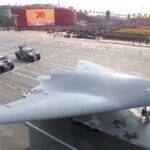The Royal Thai Air Force (RTAF) has placed an order for a next-generation Airbus A330 MRTT+ multirole tanker transport aircraft equipped with both boom and hose-and-drogue refueling systems. The contract marks Thailand’s most significant aerial refueling acquisition to date and positions the country among the few regional air forces fielding strategic-level tanker capabilities. Delivery is scheduled for 2029.
Strategic Leap in Southeast Asian Aerial Refueling
The acquisition of the Airbus A330 MRTT+ represents a substantial leap in capability for the RTAF. Previously reliant on aging Boeing 707 tankers and limited probe-and-drogue assets, Thailand lacked a modern platform capable of supporting both Western and Eastern-origin receiver aircraft. The new MRTT+ addresses this gap by integrating dual refueling systems—an advanced fly-by-wire boom alongside underwing hose-and-drogue pods—allowing it to service a wide range of aircraft types across NATO and non-NATO inventories.
This flexibility is particularly relevant given Thailand’s mixed fighter fleet, which includes U.S.-origin F-16s (boom-compatible) and Swedish JAS 39 Gripens (probe-equipped). The MRTT+ will enable simultaneous support of both platforms during joint or independent operations—a capability previously unavailable to the RTAF.
A330 MRTT+: Platform Evolution and Enhancements
The A330 Multi Role Tanker Transport (MRTT) is based on the civilian Airbus A330-200 airframe but militarized with reinforced structures, military avionics, self-protection suites (DAS/MAWS), and aerial refueling hardware. As of 2024, over 60 units have been delivered globally to operators including Australia, the UK (as Voyager KC2/KC3), South Korea, Saudi Arabia, France, Singapore, and NATO’s Multinational MRTT Fleet (MMF).
The “MRTT+” variant ordered by Thailand incorporates several enhancements over earlier blocks:
- Improved fuel offload efficiency via updated mission system software
- Enhanced connectivity features including SATCOM upgrades and Link-16 integration
- Future-proofed avionics architecture aligned with FMS Block Upgrade paths
- Optional defensive aids suite (DAS) including missile warning sensors and DIRCM
Airbus confirmed that the Thai aircraft will be equipped with both Cobham underwing pods for probe-equipped receivers and an advanced ARBS (Aerial Refuelling Boom System) capable of transferring up to 1,200 gallons per minute. The total fuel capacity exceeds 111 tonnes without need for additional tanks.
Contract Details and Industrial Cooperation Prospects
While neither Airbus nor the Thai Ministry of Defence disclosed contract value publicly as of September 2025 reporting, estimates based on similar procurements suggest a unit cost between €220–250 million depending on configuration. The deal was reportedly signed following government-to-government negotiations rather than open tender.
Airbus has also signaled willingness to explore industrial offsets or training cooperation with Thai aerospace entities such as TAI or DTI. While no formal offset package has been announced yet, prior deals in Asia-Pacific have included local MRO partnerships or simulator packages integrated into national pilot training pipelines.
Regional Implications: Strategic Reach Amid Rising Tensions
Thailand’s procurement comes amid growing emphasis on strategic enablers across Southeast Asia. Singapore operates six A330 MRTTs; Indonesia has expressed interest in long-range tankers; Malaysia is evaluating options post-retirement of its KC-130H fleet. In this context, Thailand’s move signals intent to project airpower beyond its borders—whether in support of ASEAN disaster relief missions or regional deterrence posture.
The ability to conduct sustained fighter deployments over maritime zones such as the Andaman Sea or Gulf of Thailand also enhances Bangkok’s ability to respond to gray-zone threats or participate in multinational exercises like Cobra Gold more effectively.
MRTT Global Footprint Expands Further
The Royal Thai Air Force becomes at least the tenth operator of the A330 MRTT family globally. As geopolitical competition intensifies in both Europe and Asia-Pacific theaters—and as legacy tankers like KC-135s age out—the demand for multirole tankers continues to grow. Airbus Defence & Space has positioned itself as a leading supplier in this niche against Boeing’s KC-46A Pegasus program.
The selection by Thailand may further influence regional procurement dynamics—especially among countries balancing U.S.-aligned interoperability needs with European industrial ties. With deliveries slated for 2029 and potential follow-on orders possible depending on operational feedback post-integration into RTAF doctrine, this marks a milestone moment in Southeast Asian airpower development.








